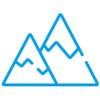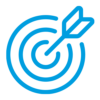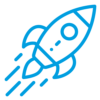Agility in HR Success Case
Client
The World’s Leading Children’s Hospital
Number of Employees
3600 +
Solution
Workshop Series on Agility in HR
Lead Netminder
Ali Cox

Client Overview

Client Overview
What is the client’s business, industry, and product or service? Who is the client’s target customer?
Our client is the world’s leading children’s hospital. More specifically, we were asked to help the HR department. The HR team is responsible for attracting, developing, and retaining the top researchers, doctors, nurses, and hospital staff in the world.
They recognized that designing and delivering a clear service strategy was critical to the hospital’s mission of finding cures and saving children’s lives.

Challenge

Challenge
What challenge or initiative was the client looking to address?
The HR team recognized that their internal customers and their own team members were frustrated with many challenges caused by the hospital’s recent exponential growth. These frustrations included inconsistent, unclear, and ill-defined legacy processes, policies not aligned with customer needs, lack of clarity regarding roles, and no clear definition of customer service. They wanted to shift from a culture of “We can’t do that,” to “Let me understand what you need,” and from “That’s not the policy,” to one that recognizes policies as guidelines. They wanted an integrated approach that would sustain them through the organization’s growth.
Once aware of their goal, they partnered with Whelan & Associates to seek input from employees to identify their biggest roadblocks and pain points. Focus groups and survey results revealed major pain points:
- They tended to work in silos which led to lack of understanding regarding who does what, mistakes, and inefficiencies.
- They had no common process to fix problems as a team.
- They did not have a clear understanding of what services their customers needed.
They needed an overarching plan, as well as new skills and tools. Given these complex organizational demands, Whelan & Associates knew it was time to bring in Netmind!

Target Audience

Target Audience
What was the participant profile? What department do they belong to? How does this department fit into the organizational structure?
We worked with the entire human resources department. Within HR, there were 11 areas of business that included: Benefits, Communication, Compensation, Employee Relations, Talent Acquisition, Immigration, HRIS, Learning and Development, Occupational Health, Wellness, and HR Administration.
These departments design the processes, policies, tools, and resources required to recruit, select, manage, promote, engage, terminate, train, and develop the talent for all hospital functions.
HR departments typically fall outside of the traditional agile audience of IT. By expanding agility to people systems, the HR department becomes a change agent and catalyst for facilitating an organizational and cultural mindset shift.

Objectives
What objectives was the client looking to achieve? Were there high-level initiatives or goals that motivated the client?
Placing an emphasis on the reality that the hospital’s most valuable asset is its people, a full initiative was launched. The project, named Customer Service Initiative (or CSI), was themed as an investigative program with the goal of developing competence around the following objectives:
- Collaborative Team Building. Increase collaborative team building within and between HR areas to reduce silos and improve communication by creating cross-functional work groups designed around fun and collaboration.
- Enhanced Customer Experience. Define the HR department’s customers and what their needs are in order to better address the needs of the hospital.
- Core Process Mapping and Visualization. Increase transparency of roles and tasks within value streams in order to identify gaps, improve efficiencies, and increase knowledge and value to customers.
- Continuous Improvement Approach. Increase capability for holistic problem solving in order to be more efficient at improving customer satisfaction by reducing waste and delivering value using a common set of tools and processes.

Solution
What solution did we propose to accomplish their objectives? How was the program structured? What were the contents of the program? What was Netmind’s role in the solution?
After initial discussions with the client about their challenges, we designed a workshop-driven solution to build skills and practices around each of the four objective areas.
The design team integrated Netmind’s tools into both the project plan as well as in the delivery. The project plan was designed around agile sprints – which we called “Crawl-Walk-Run” – so that skills could be acquired in more bite-sized, consumable pieces rather than overwhelming the team with a traditional project year-long plan with strict deadlines that weren’t adaptable to new business demands.
To kick off the project, we held the first “crawl”, which was themed as Squad Room Sessions, to orient all HR employees with the goals, approach, and timeline of the project. These sessions also served as a platform to promote excitement around the project! Then, timeboxed sprints, themed Lab Sessions, addressed the target activities and objectives that enabled the teams to “walk” with the skills in each of the four objectives. The ultimate goal of “running” was for team members to apply the new skills and tools in their day-to-day work and begin to share their experiences with other departments, themed as Field Sessions.
Collaborative Team Building
- Created fun and energy by designing a theme of CSI Detectives with a mission of “working together to research missing information about customer needs.”
- Used agile planning and sprints with milestones to build skills in creating flexible plans that adjust to team demands.
- Celebrated milestones (awarded CSI business cards and t-shirts after completing the workshops, awarded pins to Lead Investigators, updated and celebrated project progress at staff meetings).
- Reinforced shared tools (Microsoft Teams, Sharepoint, Trello) to promote collaborative practices.
- Gamified where possible (used the Ballpoint Game as both a team building exercise as well as a way to teach continuous improvement concepts).
Enhanced Customer Experience
- Introduced department to customer personas and three customer segments: employees, partners, and regulatory/stakeholders.
- Conducted LEGO® Serious Play® workshop to understand the customer perspective of employees who had recently been onboarded.
- Utilized customer journey mapping and personas to better understand the needs.
- Created a customer experience toolkit for HR.
Core Process Mapping and Visualization
- Held cross-functional workshops to begin integrating siloed departments and documenting their core capabilities using a FUNctional breakdown exercise.
- Demonstrated the power of visualization techniques (e.g., kanban agendas, how to create impactful flipcharts, designing an HR area Value Shield).
- Created a matrix of “Functions by Customer Segment” to help identify seven departmental value streams.
- Mapped a value stream to discover process flows, problems, inefficiencies, and areas for improvement.
- From the value streams, identified the core capabilities and built a visualization of their business architecture.
Continuous Improvement Approach
- Taught continuous improvement philosophy (e.g., “Celebrate the discovery of a system failure over the assignment of blame”) and transferred skills by teaching from the Back of the Room, including:
- Played the Ballpoint Game with cross-functional groups to give experience in continuous improvement.
- Ended meetings with Retrospective/Plus Delta exercise to make improvements more routine.
- Taught Lead Investigators (aka, Run Team) how to analyze and re-engineer processes following Lean principles using process mapping and swim lanes.
- Led teams in root cause analysis using The Five Whys to discover problems in their processes.
- Taught skills for solution generation (teams created mind maps for each of the problems identified).

Outcomes
What value did we deliver to the client? Which problems did we solve? How has the solution changed the client’s way of working?
Outcomes were observed in multiple ways including feedback from the CSI Project’s steering committee as well as from specific deliverables.
Collaborative Team Building
Working as cross-functional areas led to important dialogues around roles and tasks. Comments at the retrospectives included:
- “Love the ballpoint game.”
- “Love the variety of exercises.”
- “Like celebrating progress between steps.”
The team-building sessions not only helped intra-departmental relationships, but also inter-departmental relationships, resulting in more effective collaboration within and between teams.
Enhanced Customer Experience
Using LEGO® Serious Play®, we identified major problems with the onboarding process. Employees felt like they were left without direction in their new positions. Since our workshop, HR has started to address this problem by continuing their services past the 90-day onboarding period in order to ensure employees feel ready, capable, and supported in their jobs.
Core Process Mapping and Visualization
The FUNctional breakdown led to documentation of capabilities across 57 different processes within the 11 HR areas and identified 7 value streams that crossed HR areas.
By each area presenting their capabilities to the other 10, everyone was able to better understand how each area’s work impacted others, as well as how their processes might be creating mistakes during hand-offs. The resulting breakdown also served as a visualization of the area’s business architecture, which can be used for future improvement initiatives.
Team members commented that visualizing their work helped them see what others were doing that wasn’t obvious. They also liked that everything was on the table for review and it was all open for discussion.
Documenting two of the team’s value streams (i.e., onboarding and post hire) enabled the team to identify and address pain points, increase role clarity, and eliminate redundancies in the process.
Continuous Improvement Approach
Get the full experience from those who experienced this transformation first-hand, including from the Project Lead and Director HR Communication.

Next Steps
What future goals does the client now wish to accomplish? How will the expand on what they have learned/implemented?
Our workshops led to a desire for more traditional course-based learning to help the teams acquire the core skills needed to support their new framework and ways of working.
As we move forward, we will work to transfer knowledge effectively to the HR team so they aren’t dependent on us long-term for continued improvement and growth. Our goal at Netmind is to “Empower Digital Teams” so our clients have internal change agents who are equipped to lead the transformation. We will be holding “train-the-trainer” sessions within HR to help them learn how to utilize the tools and processes they need to achieve their future goals.

Can we get?

Can we get?

Can we get?

Can we get?
